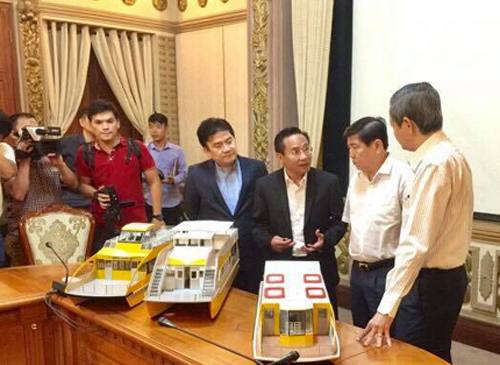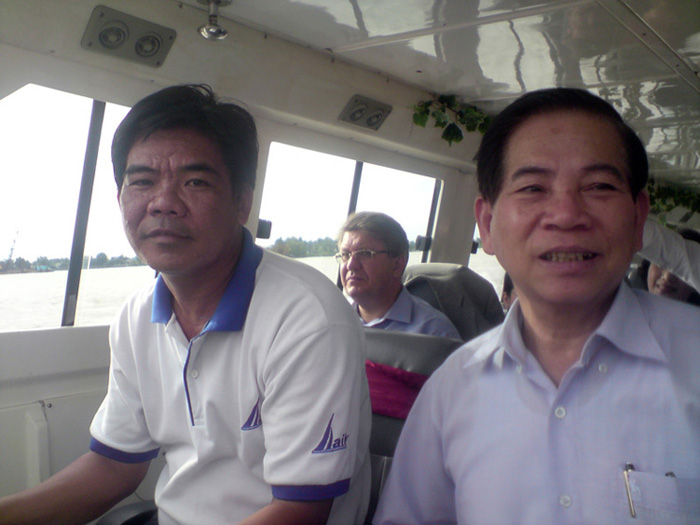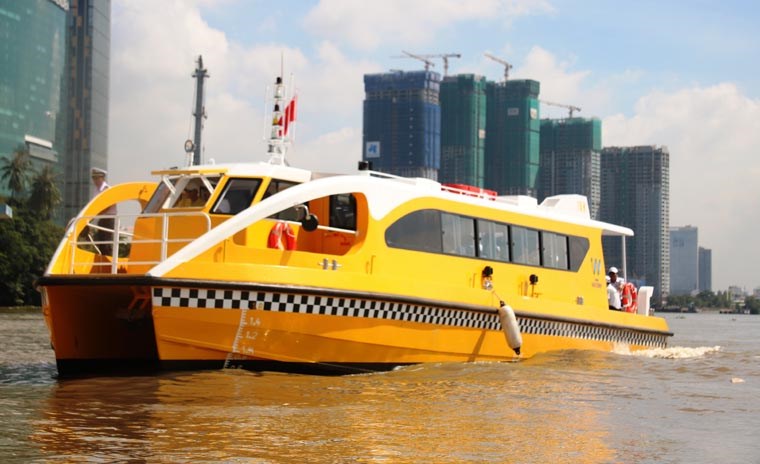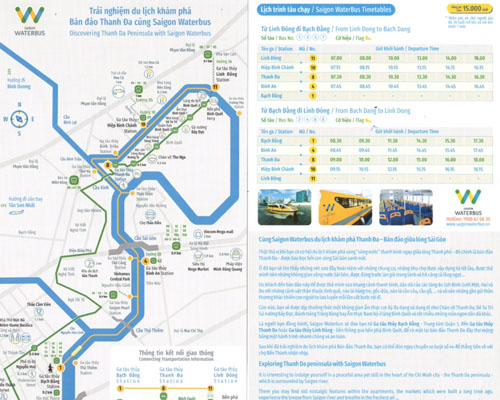|
By Jesus Lopez-Gomez|November 8th, 2018
From Land To Water
How Saigon is rediscovering its aquatic spirit
The Saigon Waterbus (saigonwaterbus.vn) is only about a year old, but the project’s creators see it as a spiritual successor to Vietnam’s lasting historical partnership with the nation’s water resources. The first boat left Bach Dang Station in November 2017, but the idea visited the project’s creators in the early 1990s.
Nguyen Kim Toan, director of the ferry operator Daily Limited Company, was then working with Larry Hillblom, a US businessman who’d parlayed a parcel-by-mail service into the global courier giant DHL two decades prior. Before Hillblom died suddenly in a seaplane accident in 1995, he had an abiding interest in doing business in Vietnam. Most of his investments were in Saigon, such as the Novotel Hotel. Nguyen and Hillblom met while the American was developing the Riverside Apartments in District 2. Hillblom used a small boat to ferry the apartment’s residents to downtown Saigon.
“This story encouraged Mr. Toan” to consider using the city’s waterways for a larger transportation project, Nguyen’s translator Tran Quang An says. The project will celebrate a year of operation this month. At the moment, the Saigon Waterbus operates 30 trips daily that take Saigon’s travelers and a few commuters along a 10-kilometer route via a fleet of 75-seat boats. The entire trip takes about an hour from Bach Dang Station in downtown District 1 to Linh Dong Station in Thu Duc District. There are three stops between and more ports being built: a dock in Binh Thanh District will be built in 2019 and another in will be built in Thao Dien the same year.
Currently, about 85 percent of the boat’s passengers are tourists and the remainder are commuters. Nguyen said he expects the commuter representation to grow as the service offers more stops. A second route is planned that will serve passengers in District 4.
The Project’s Lineage
Nguyen, the “father of the project,” his interpreter Tran says, sees the Saigon Waterbus as an heir to Vietnam’s waterborne past. Nguyen explained that Vietnam has risen to its current socioeconomic position due largely to the nation’s abundant waterways. That’s evident in the waterborne traders who fostered early economic growth in the nation’s history as well as the agricultural community’s skillful use of water in the cultivation of staple crops like rice.
The Saigon Waterbus project made sense to Nguyen because of the place waterways have in the nation’s history, he says. The city is framed and bisected by a network of them including the Dong Nai, Saigon and Mekong rivers. He was inspired by the prior Saigonese who worked to develop the city’s network of canals. As Nguyen speaks, he points to a massive barge bearing a small mountain of fist-sized, gray stones gliding over the Saigon River. “That would require maybe 500 trucks to deliver” by road, says Nguyen. “Water has made the city and the broader nation possible in important ways.”
The last stop in the boat’s route in Thu Duc is just a short ferry ride to Binh Quoi Village 2, a peaceful area outside of the buzzing city. Nguyen says the waterbus ought to be used to explore some of the city’s lesserknown sights, like Thanh Da Peninsula, an area of Ho Chi Minh City with relatively little development and abundant ecological treasures. Traveling by boat is a calmer and more pleasant experience than getting to these destinations by overland travel, says Nguyen. The boat’s pace is such that passengers are encouraged to take time and soak in the sights of the greenery around the river.
Nguồn: http://oivietnam.com/2018/11/from-land-to-water/
|










